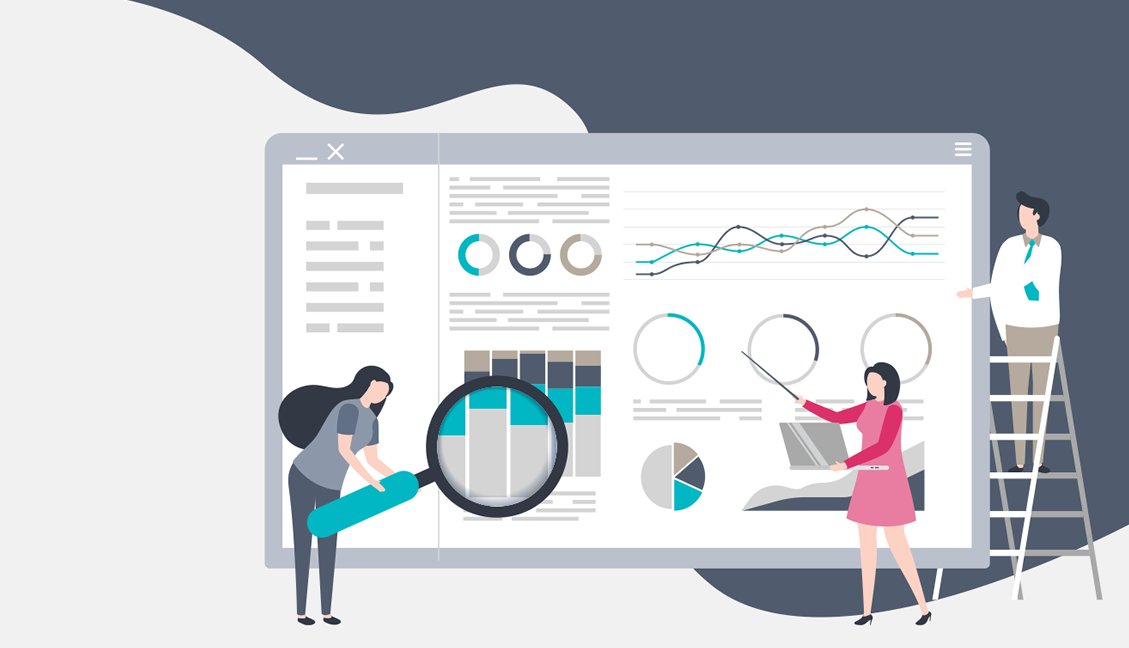The most common headaches in BI implementation
Bad quality of data that are stored in different databases
The No 1 step in implementing a BI project is pulling data into the data warehouse from the various other company systems such as the CRM, HR systems, and finance systems. But first, data must be cleansed, which is time consuming and costly. When it comes to the data you should be integrating into your data warehouse, think big, but start small to minimize the up-front consultancy hours for data you aren’t even sure you need or want to begin with. This is the data that’s going to give you the biggest turn on investment quickly.
Start-Finish project implementation and not an eternal BI project
Projects that are too long in implementation is a plague for companies who struggle to select the most important data to bring into their BI project. As a result, they overdo it, raking in scores of data that ultimately muddies the pond. This leads to the data quality problems I’ve already mentioned. All too often we have seen companies pull data into the data warehouse, clean it, and then decide that they don’t actually want or need those data sets. This results in a seemingly never-ending process of starting, stopping, starting, and stopping the BI project. Worse, it’s not uncommon to see company priorities change in this time before any analytics objectives can be obtained, rendering everything already done up until that point useless. The business world is changing so rapidly that a slow BI implementation can mean no BI at all.
Understand your business objectives
Understand your business objectives from day one and build an action plan. Continuously re-evaluate this plan. Real world problems commonly move the burning platform, so to speak. Your action plan should be flexible enough to move with it. Don’t think of BI as one set project, rather a continuous strategy towards data-driven excellence. Instead of pulling in data across the board because it might be useful, establish the metrics that matter most and focus only on those. This prevents information overload and ensures employees are focused on the most important KPIs.
Licensing nightmare
Licensing is the uncontrolled growth in software licenses within a company. Of course, the ultimate goal of any successful BI implementation is to spread the power of analytics to as many users as possible throughout the company. Many vendors charge a fixed price per user and don’t offer bulk pricing. As new users are added over time as the project grows, that price doesn’t flex. BI buyers also often overlook the fact that once their BI project evolves to a more collaborative, unifying strategy, there is a high price tag for the additional servers needed for an enterprise-wide roll out.
Roll out process that needs to be smooth
When you are doing long-term strategic thinking is particularly important for avoiding a surprising license creep. It’s important not only to consider what objectives your company wants to achieve to start a new BI project, but also what the long term goals should be and who should be involved in their execution. Grow you license with the BI roll out over time. Start with key users and buy licenses as you need them. Get professional help to initiate your BI roll out and ensure internal staff is trained to further develop and support the solution. A large part of this plan is mapping out who in particular will be utilizing analytics, their roles and functions within the organization, and how they best consume data. We call these the BI personas.
Pure performance of the solution
When you’ve purchased and implemented a BI solution, now you need to learn how to use it. A powerful BI and analytics solution isn’t worth anything if users aren’t armed with the know-how they need to take advantage of the various levels of tools. Companies are often won over with the words “self-service” only to discover that quite a bit of technical expertise is needed. What might look simple and user-friendly in a demo by a sales professional can be an overwhelming task for a business user in the real world. Companies are often won over with flashy data visualizations and dashboard software, but when business decision makers need to dig in to further details, they need expensive consultants to help.
Swiss army knife for your business
Each user should receive the BI training classes designed specifically for their BI needs within the organization. Like licensing, training is not one-size-fits-all. Go with the BI vendor that has an array of different classes for a variety of different skill levels—from basic dashboards and data visualization to advanced real-time analytics and everything in between. And training shouldn’t break the bank. A BI provider that charges an arm and a leg for training is missing the point of BI for everyone.


